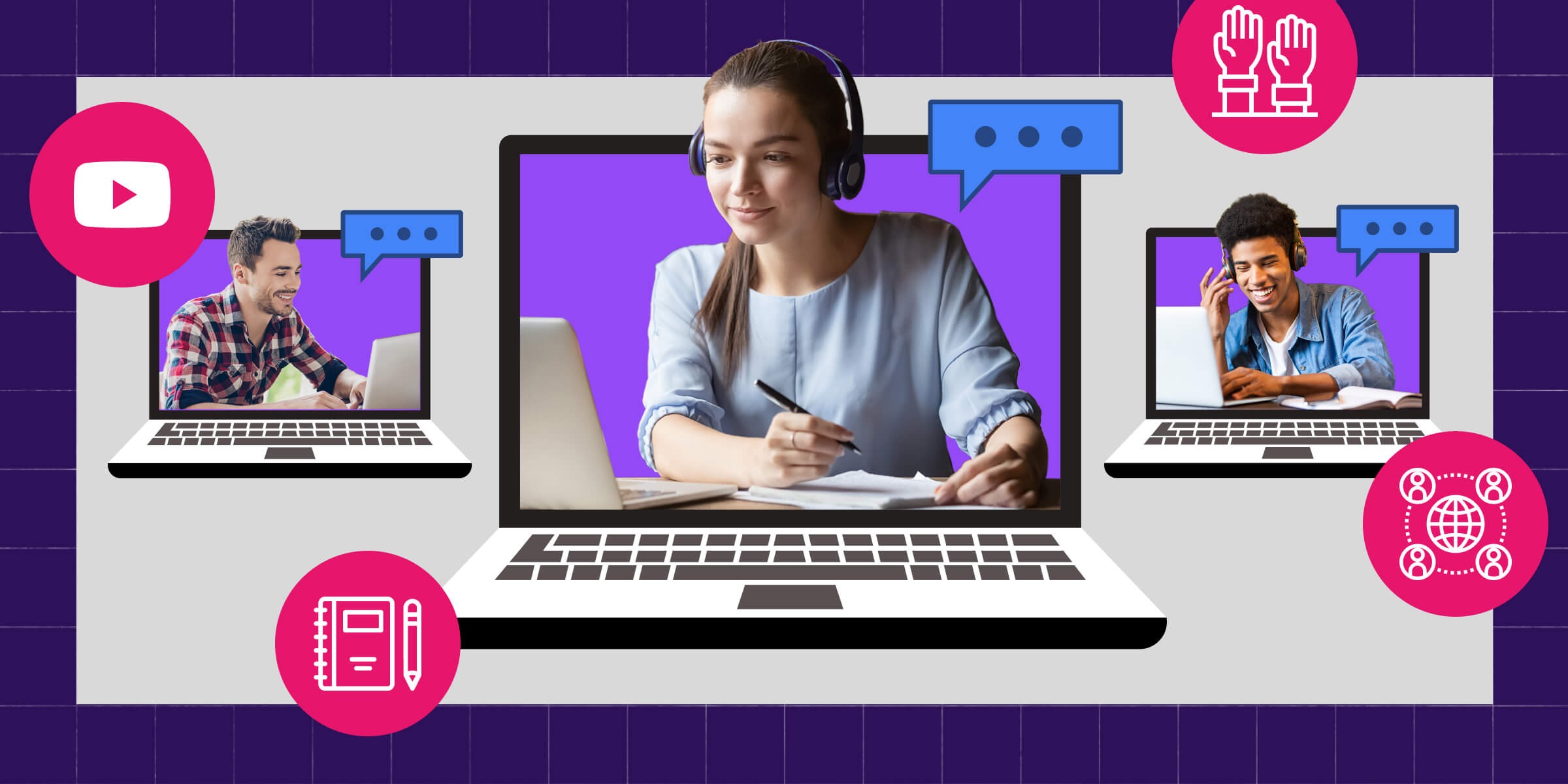Back in the day, studying was the only thing that mattered. Thanks to significant technological advancements, schooling now involves YouTube videos, PowerPoint presentations, and Google searches. Some websites and technological tools are disregarded as having no place in education because they produce pupils who are unmotivated, disinterested, or lazy. However, if used properly, this technology with a poor reputation might still be helpful to pupils. Let’s follow us to find out How technology helps students learn in this post!
How technology helps students learn
More chances for project-based learning are provided by it
The days of transporting a massive poster board between locations for each job are over. Students can now participate in project-based and inquiry-based learning thanks to technology. Students have the option of working in groups or alone, and with to tools like Google Classroom, professors and other group members may participate and offer comments in real-time. In Google Docs and Slides, students can collaborate and live edit while concurrently producing presentations or group papers.

These assignments encourage students to think critically rather than just memorize facts. Students have unrestricted access to resources for learning and researching any subject. Instead of making a poster board of rehashed information, they might use their knowledge to offer answers to problems that actually exist in the world. Additionally, technology provides students greater latitude in how they wish to finish a task, such as by creating a blog, website, video, and other types of content.
Students learn more as a result (and better)
Students pick up knowledge in various ways. A teacher presents the content in a regular lesson, and each student interacts with it in the same way. The whole class should progress through the material at the same rate. As you would guess, there isn’t much space for creativity when teaching thirty pupils the same material in the same formats over the same allotted amounts of time. But it’s not necessary to be that way.
Students have more flexible studying opportunities thanks to online resources. Some pupils may use a YouTube video tutorial to comprehend a concept more fully. Others might play a game or complete an online task that offers immediate feedback to let them know if they’re on the right road.
While those who need more practice can choose a different exercise that offers more repetition, those who understand the content right away can discover more challenging puzzles or tasks to reinforce their knowledge. To put it another way, technology gives pupils variety in a manner that a normal lecture cannot.
Additionally, technology encourages pupils to learn. They anticipate using their devices to browse websites, watch videos, play games, and learn new things. Students can learn while having fun, which keeps them interested in the subject matter.
It enables parents to maintain contact and assist their kids
Parents had very little knowledge of what was going on in their children’s education prior to what they were told at home or during parent-teacher conferences when technology had a small role in education. Parents can become much more knowledgeable about and involved in their children’s education with the use of product technology. Students are more likely to achieve and be motivated to learn when parents are involved in their education.

Parent-school communication has been greatly enhanced by technology. The grades, attendance, and even classroom behavior reports of their children are available to parents in real-time. And if a parent needs to get in touch with a teacher or administration, they can do so through the school’s LMS with a brief email or message.
Technology can be a huge assistance for parents who find it difficult to assist their kids with their schoolwork. Step-by-step tutorials on a wide range of academic areas are available on websites like Khan Academy. For instance, the website offers practice exercises for a variety of math topics ranging from elementary arithmetic to calculus. It provides clues and explanations to help students figure out where they went wrong if they get stuck. Additionally, it offers a ton of sample issues for students to practice the same idea.
Gamification on websites like Classcraft can assist offer students individualized learning possibilities. For instance, using an instructor-created quest, students can advance through a lesson plan at their own leisure. Students are encouraged to learn because they can receive incentives and unlock character points after finishing a quest, which keeps them interested in what they are learning.
Furthermore, educators frequently have their own pages that are packed with useful resources. These are readily available to parents, who can use them to assist their children in understanding the information covered in class.
It gives educators access to practical resources and possibilities
Teachers appreciate technology because it provides a wealth of (mainly free) tools to improve student learning in the classroom, parent communication, and their own professional growth. Teachers can find resources to use with their classes or websites that let students practice new topics. There are countless instructor resources available to enhance instruction. Check out these applications of contemporary classroom technology if you’re seeking some starter resources.
Teachers, like parents, get a lot from technology. They can quickly email every student in the class or text every parent at once using Remind.com. There are only a few clicks required for a teacher to get in touch with a specific parent. A teacher can join an online forum to discuss ideas and ask questions or send a brief email to her coworkers when she needs assistance.

Don’t assume that technology only has positive effects on pupils; it also allows teachers to pursue professional development while relaxing on their gadgets. College courses and full degree programs can now be completed online. Additionally, there are websites where educators can assist and encourage one another. They have access to thousands of publications to assist them to understand how education is changing and finding some of the best practices from around the world.
Conclusion
Technology may enhance education in a variety of ways. Free internet resources, individualized learning materials, and chances for advanced learning are beneficial to parents, teachers, and students alike. With the knowledge that they are making a wise investment in the future of their students, school districts can adopt new technologies. After all, technology is here to stay and is a valuable tool in any modern classroom.



